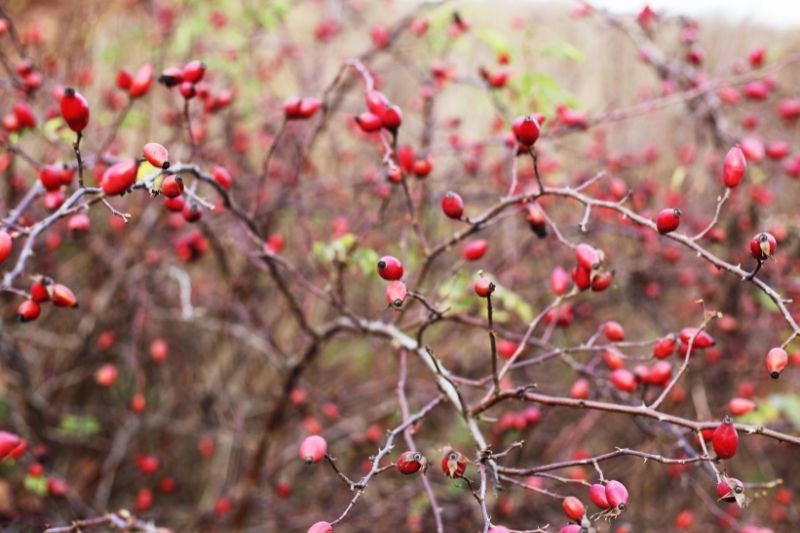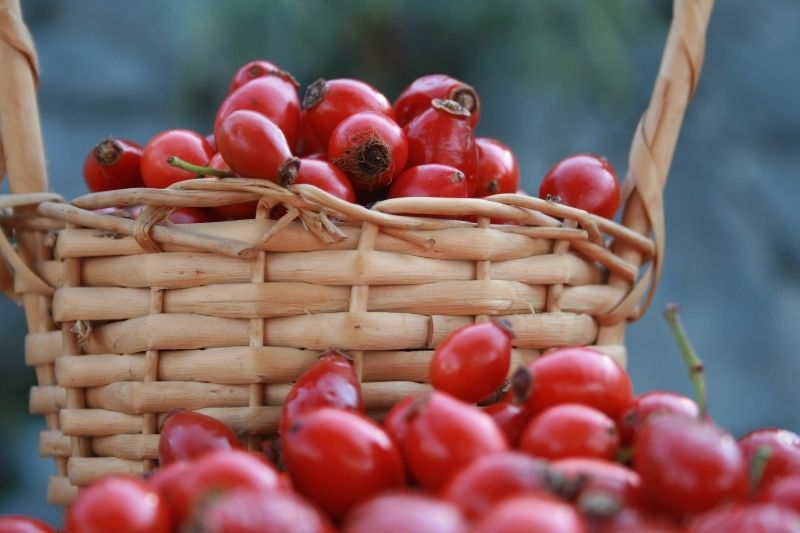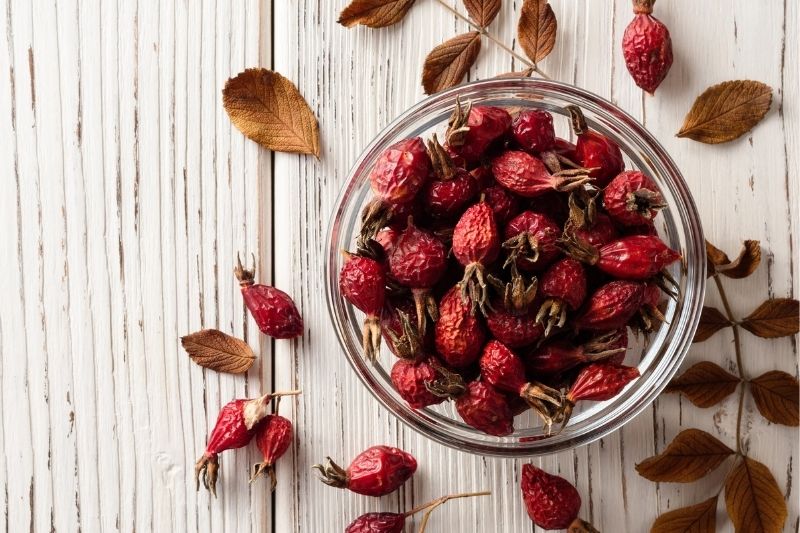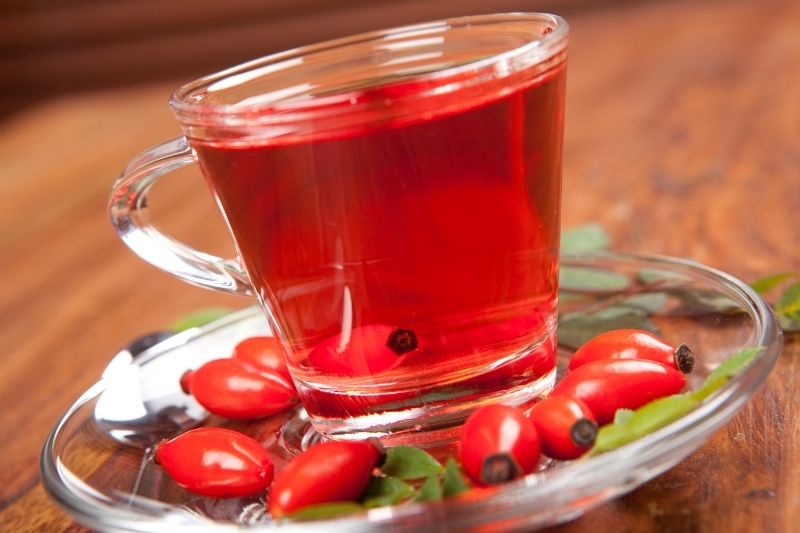They are often used to make delicious jams: hips are the fruits of rose bushes and wild roses, renowned for their vitamin content and antioxidant characteristics. When ripe, hips appear as small fruits ranging from red, orange, or black, with a more or less elongated shape depending on the variety. Very fine hairs are present on the wall, and they are slightly urticating, which is why hips are sometimes also called "itchy-backs"! If you’re lucky enough to see these little fruits growing in your garden, discover all the tips for drying them and enjoying their many benefits throughout the year.

The hip, the fruit of the wild rose
Caring for and Harvesting Hips
Hips can be found in wild rose bushes and wild roses. In their natural state, the wild rose is a shrub commonly observed in our temperate climate: it grows in hedgerows, at the edge of woods, up to around 2,000 metres in altitude. The hips produced by these trees are pseudocarps: the red part at maturity is merely the receptacle of the flower. The true fruit is found inside, consisting of achenes. They can be eaten as they are or dried.
Which Are the Best Varieties for Drying?
There are many varieties of rose bushes: if you want to grow hips and dry them, you can’t just choose any rose bush. Indeed, you must select a European variety of hips to ensure berries of around 4 cm in diameter.
The most well-known variety is Rosa canina, but other alternatives are possible: Rosa arvensis, Rosa rubiginosa with delicately scented leaves, or even Rosa sempervirens, among others.
Harvesting Hips: How to Do It?
You can start harvesting your hips from October, when the first frosts have softened the fruits slightly. However, some people begin harvesting as early as August and September, when the fruits are still firm. At this stage, it’s particularly easy to split them in half, remove the seeds and urticating hairs, and enjoy them as they are.

Harvesting hips
If you pick the hips later, when they are soft, it won’t be possible to open them by hand. However, once back home, you can cook them and strain them to remove the hairs, with the aim of making jellies or syrups. Soft fruits are sweeter, which also enhances their flavour when drying.
Everything You Need to Know About Drying Hips
To enjoy hips all year round, nothing could be simpler: pick them when ripe, then dry them! They’ll keep for several months without difficulty, and you can even freeze them if you wish.
Oven Drying
After harvesting, start by sorting all your hips, keeping only the good ones. Place them on a baking tray, then put them in a preheated oven at 45–50°C.
When drying hips in the oven this way, it takes about 8 hours, with the recommendation to gradually increase the oven temperature during the process, up to 60°C.
Remember to open the oven door occasionally to allow better moisture evaporation. You can stir the fruits by gently shaking the tray, but avoid touching them with your hands or utensils like a spatula or spoon.
Drying in an Electric Dehydrator
If you’re lucky enough to have a dehydrator, you can dry your hips even more easily. Here too, it all starts with sorting to remove debris and bad fruits.
Next, place the hips in your electric dehydrator for 9 to 12 hours. Some more powerful devices can complete the process in less time, around 6 to 8 hours depending on the model.
Always ensure to respect the recommended drying time, or the berries may break easily in your hands.

Dried hips
Storing and Using Hips
Harvested from September until the first autumn frosts, hips can be stored at home all year round if you know the right methods.
Some Storage Tips
Hips can easily be frozen as they are. But if you’ve taken the time to dry them in the oven or dehydrator, you don’t even need to freeze them to enjoy them throughout the winter!
Avoid storing dried hips in plastic containers; opt for fabric bags instead. Alternatively, you can use glass jars, provided you seal them with a cloth secured at the top with a string.
How to Use Hips in Cooking?
Hips can be used to make jams and jellies. More surprisingly, some people mix them with tomatoes to create a unique-flavoured ketchup. Once dried, these berries become the perfect ingredient for homemade herbal teas. You can also incorporate them into various savoury recipes and sauces to play with flavours, textures, and sweet-savoury combinations.

Hip Tea
An Ingredient with a Thousand Benefits!
Hips aren’t just appreciated for their taste: they are a fruit rich in vitamin C, as well as vitamins B1 and B2. They contain potassium, antioxidants, and flavonoids.
If you have hips in your garden, remember to harvest them in autumn to cook, dry, or even freeze them, so you can enjoy them whenever you like.































Comments